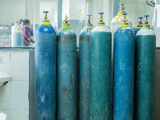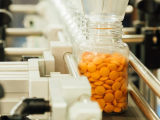Experts have long touted continuous manufacturing as one of the solutions for shoring up the US drug supply chain, but it was only in January that Continuous Pharmaceuticals won a contract to set up the United States' first Food and Drug Administration (FDA)-approved continuous production facility, according to Fierce Pharma. (Prior to that, manufacturers of at least six drugs have partially used continuous manufacturing since the concept came up in 2007.)
Despite the apparent hesitation, a recent comparative risk study on oral solid dosage (OSD) pharmaceuticals suggests that not only does continuous manufacturing lead to higher net present values (NPVs) compared with traditional batch manufacturing, but NPV for continuous manufacturing in the United States is higher than in China or India.
In the study, solo author Clifford V. Rossi, PhD, of the Robert H. Smith School of Business at the University of Maryland, also summarizes the risks that companies face in switching to continuous manufacturing. He concludes, "Crafting public policies to address such industry barriers and risks to domestic and advanced technology pharmaceutical manufacturing investment will be essential in ultimately stimulating such investments."
The results were published Sep 30 and funded in part by the FDA.
Continuous trumps batch production
Continuous manufacturing is exactly that—it continuously forms a product on one end-to-end line, integrating all testing, feeding, and processing.
As Rossi relates in his study, continuous manufacturing has higher output quality and enhanced flexibility in downsizing or increasing production levels, all of which can help with drug shortages. In addition, it is associated with better efficiency and fewer labor touchpoints, which can improve safety, and its reduced facility equipment and land needs may result in lower upfront investment and environmental conflicts.
Companies, however, have not flocked toward continuous manufacturing because of uncertainties around regulatory and compliance, operations, geopolitical and external factors, environmental legislation, financial outcomes, and more. In addition, Rossi notes that most companies, particularly brand-drug companies, tend to invest more heavily in research and development compared with manufacturing.
While Rossi's study makes a compelling case for continuous manufacturing, he writes, "The extent to which leveraging advanced manufacturing capabilities can enable more resilient and secure US production of pharmaceuticals depends on developing domestic access to [active pharmaceutical ingredients], and reducing regulatory, financial and environmental uncertainty for pharmaceutical makers."
Economic, not just idealistic, benefits
To evaluate the functional merits of continuous manufacturing, Rossi created a stochastic model that used 156 different domestic and foreign manufacturing scenarios to create 10,000 different investment outcomes. He examined NPV across brand and generic manufacturing, comparing batch versus continuous manufacturing for financial revenue, and across site locations in the United States, China, India, and Ireland.
Rossi found that, in almost all scenarios, continuous manufacturing NPVs exceeded those of batch manufacturing. This applied to both generic and brand companies even though generic companies operate in a much more competitive environment. The only exception was a scenario with the most extreme cost volatility (15%) and the most conservative investment value at risk (99th percentile).
The model also projected higher NPVs for US-based batch processing facilities compared with batch processing facilities in China or India, further cementing the argument to not only onshore manufacturing but to convert to continuous manufacturing.
For instance, current US corporate tax rates for companies that invested in continuous manufacturing (21%) were associated with a higher NPV than batch processing in China or India but not Ireland, where corporate tax rates are 12%. If US corporate tax rates were to increase to 28%, however, net NPV lowers for US continuous manufacturing investments.
"Results indicate that continuous manufacturing has the potential to make manufacturing of OSD pharmaceuticals more economically attractive in the U.S. than foreign manufacturing of those products," Rossi writes.
"The finding that batch manufacturing of OSD products in the U.S. is economically more attractive than investing in batch processes in China or India is driven by a combination of factors, including competitive corporate tax rates and nonmanufacturing hedging costs that appear to already favor pharmaceutical manufacturing investments more broadly in the US and would be further enhanced by investment in lower cost [continuous manufacturing] technology."






















